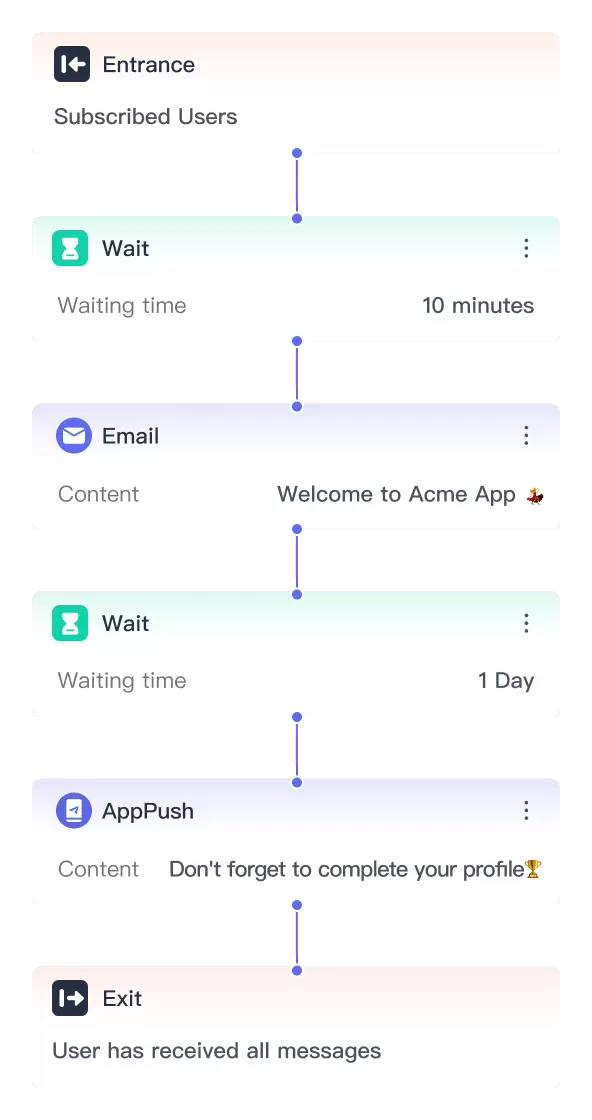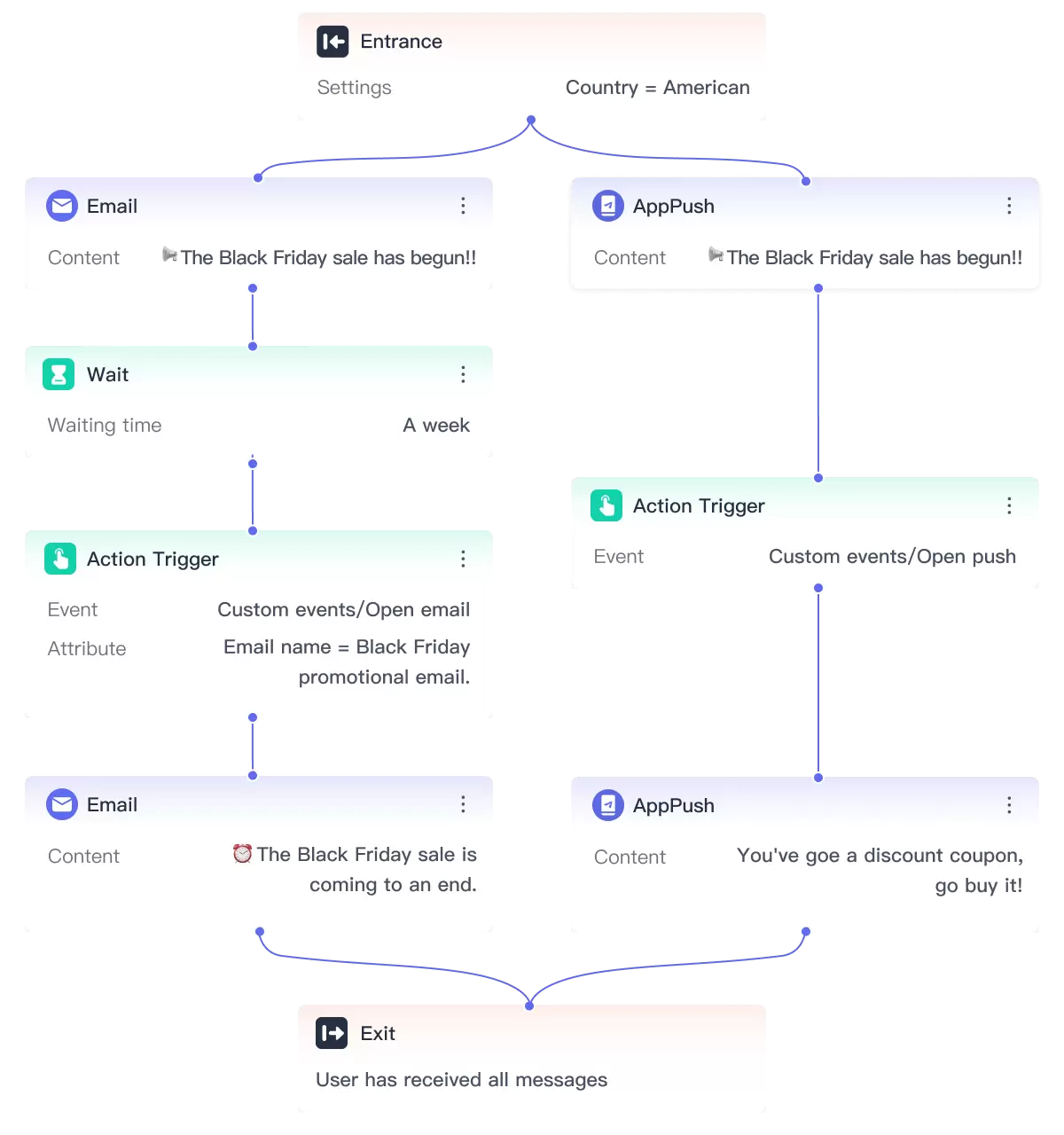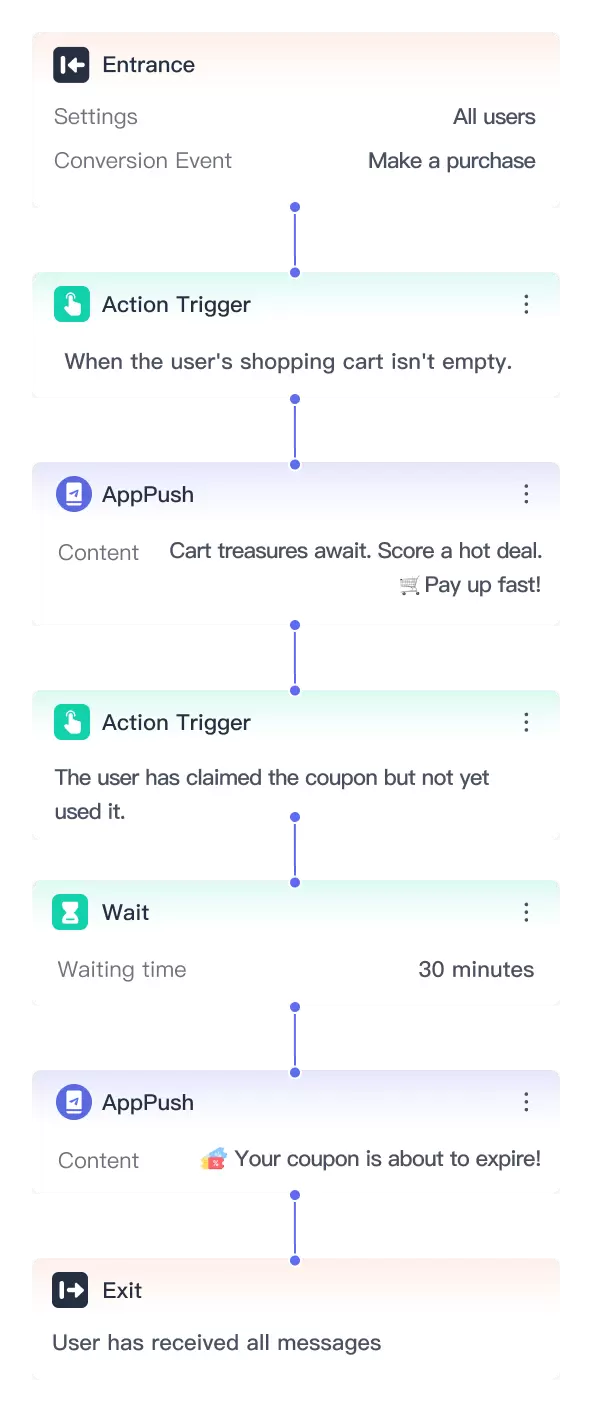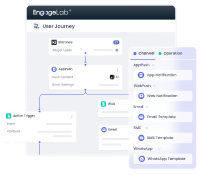Acquiring new customers takes significant time, money, and resources. When those customers leave, the investment disappears, especially if their lifetime value is low. This is why retaining existing customers is essential for sustainable growth.
Customer retention, however, is not easy to maintain. It requires consistent effort, and doing it manually can be overwhelming. Customer retention automation provides the solution. It works like a smart system that automatically engages, nurtures, and reactivates your customers, helping you protect the value of every acquisition.
In this article, we will explain what Customer Retention Automation (CRA) is, why it matters, the main channels it uses, and how you can set up your own workflow step by step. We will also show you how to grab ready-made workflow templates to make the process even easier.
Part 1: What is Customer Retention Automation (and What's Not)?
Customer Retention Automation (CRA) refers to an automated process meant to retain existing customers. It engages with customers, addresses their queries, and helps them find the solution to their problems.
The primary purpose of CRA is to reach out to customers at the right time before they turn to other brands or services. It reduces the churn rate through a proactive approach. Through data, it understands the customers' needs and behaviors and initiates personalized actions.
Suppose a customer hasn't logged into the account for a while. After a specific time, an automated email will be sent to remind the customer and spark interest by sharing a new feature. Similarly, other examples of CRA are sending automated emails after a signup, post purchase, upcoming renewal, feedback/surveys, offering loyalty programs, etc.
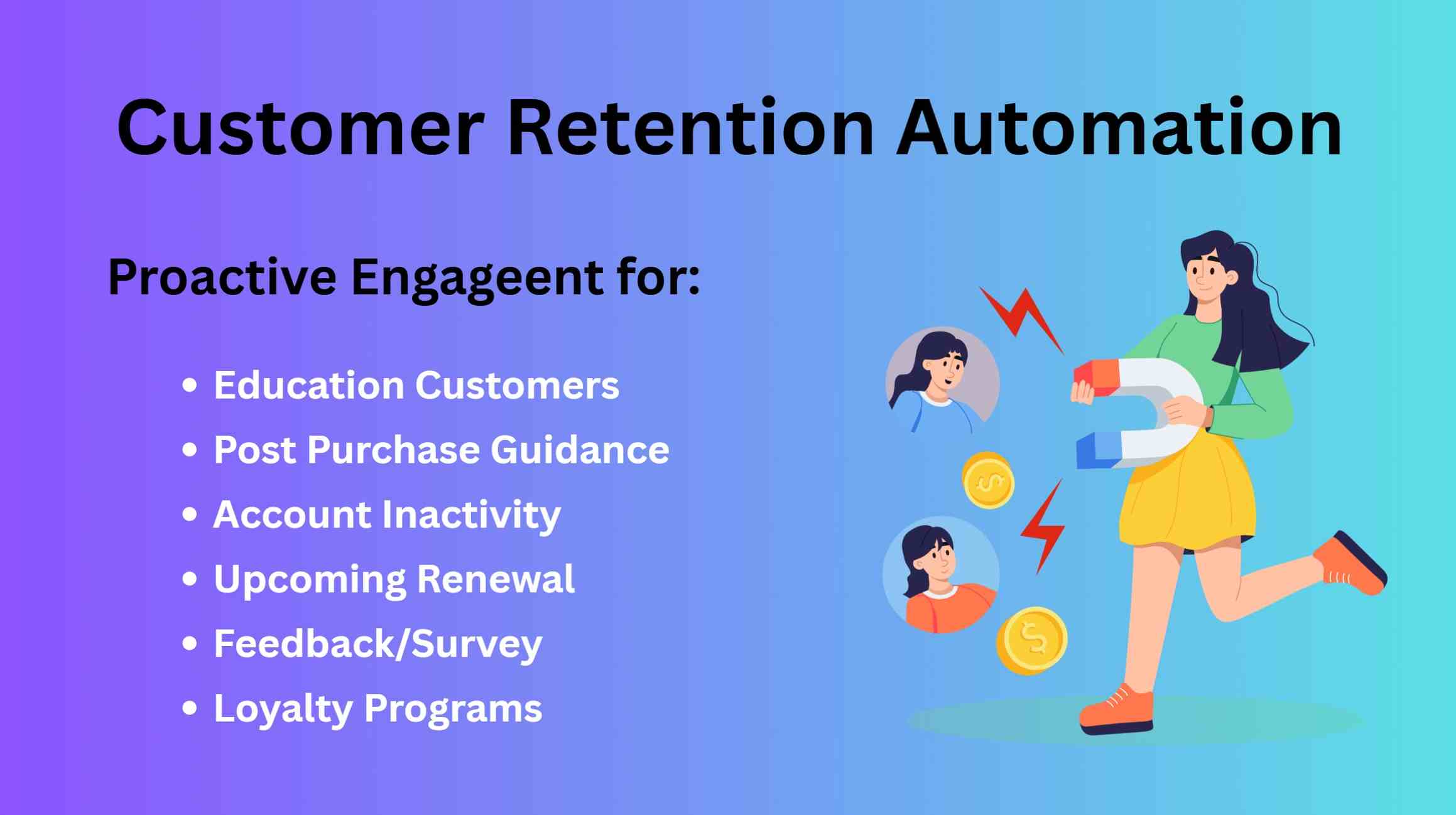
What CRA is not is reaching people who aren't already customers or subscribers. Other examples are sending one email to a large audience, manually reaching out for any purpose, acquiring new customers, etc.
Keep in mind that CRA is based on automation, proactiveness, data, existing customers (or people already interested), and personalization. If any element is missing, it is probably not CRA.
Part 2: Why Customer Retention Automation Matters?
Customer Retention Automation (CRA) is more than just a support tool—it is a powerful driver of long-term revenue and customer loyalty. Here’s why it matters to businesses:
- Cost-effective: Retaining customers is significantly cheaper than acquiring new ones. With CRA, businesses can easily re-engage existing customers, leading to repeat purchases, upselling opportunities, and higher lifetime value.
- Automation: CRA enables businesses to reach a large audience in minimal time through automated workflows. It not only makes retention scalable but also frees employees to focus on strategic tasks instead of routine follow-ups.
- Proactive Engagement: By leveraging data, CRA predicts customer behavior and communicates at the right moment. This proactive approach helps resolve potential issues before they occur and builds stronger customer relationships.
- Reduced Churn Rate: Through personalized and timely interactions, CRA boosts customer loyalty and lowers churn. This not only protects the resources already spent on user acquisition, but also opens up new revenue streams.
- Enhanced Customer Experience: CRA ensures customers feel valued by addressing their concerns, guiding them to the right solutions, and offering instant support when needed. A seamless, responsive experience keeps customers engaged and satisfied.
Part 3: Key Channels for Automated Customer Retention (Channel Comparison)
To better understand the strengths and weaknesses of each channel, here's a quick comparison table. It gives you a snapshot of when to use Email, In-app Messaging, or SMS for automated customer retention. We'll then dive deeper into each channel in detail.
| Channel | Best Use Cases | Advantages | Limitations |
|---|---|---|---|
| Onboarding, post-purchase follow-ups, educational content, offers, reminders (renewal/inactivity) | Cost-effective, supports text/images/videos, good for detailed info, builds long-term relationships | Low open rate, slower response time, can be ignored if not personalized | |
| In-app Messaging | Greetings, onboarding guidance, special offers, personalized announcements | Instant delivery, low cost, highly contextual, drives immediate attention | Only works if users are active in the app, effectiveness depends on timing and context |
| SMS | Discounts, loyalty invites, abandoned cart reminders, payment/shipping notifications, urgent alerts | High open/delivery rate, instant impact, great for time-sensitive updates | Higher cost, strict regulations, character limits restrict message depth |
1 Email
Email is the most preferred, used, and oldest method of channel for customer retention. It's been used for most use cases.
Be it onboarding engagement, post-purchase follow-ups, educational content, special offers, or reminders (renewal, inactivity, etc.), email is an excellent option.
It's a cost-effective option for most businesses. They can add text, images, and videos to make it more engaging. It is great for a formal reach out, delivering detailed information, and building a long-term relationship with the customer.
Keep in mind that emails also have a low open rate. Often, buyers neglect these emails if they are not properly personalized or targeted. Moreover, the response rate of emails is longer than other channels.
2 In-app Messaging
In-app messaging is a good choice for businesses that already have a mobile or web application. They can reach out to their customers in no time without high cost.
You might have received messages in online marketplace applications. It is an example of in-app messaging.
It is a good greeting and guiding new customers/subscribers, sending special offers, personalized announcements, etc. It can drive immediate attention and responses. However, it is not suitable for every business. The results also depend on the time and context.
3 SMS
Businesses also opt for SMS to engage with their customers and retain them. They can send discount offers, loyalty program invitations, abandoned cart reminders, payment notifications, sale offers, order/shipping updates, etc.
It's useful for time-sensitive and critical updates. It is capable of driving instant results. People are more likely to open the messages, and the delivery rate is also high.
However, it is a bit expensive. There are multiple restrictions and strict regulations in countries. And businesses can send limited characters and content, which might not convey everything.
Part 4: Industry-Specific Retention Automation Strategies
Retention priorities vary by industry, but automation can streamline communication and strengthen customer relationships across the board. Here's how different industries can apply it:
1 🛒E-commerce
Scenarios: Cart abandonment, repeat purchases, post-purchase engagement
Automation Tactics:
- Cart abandonment sequence: Send a reminder 24 hours after abandonment, follow up after 3 days, and finish with a final message to address potential concerns.
- Personalized product recommendations: Suggest complementary or similar items based on purchase history, often paired with discounts or special offers.
- Post-purchase follow-ups: Trigger tutorials, satisfaction surveys, and troubleshooting guides after every order.
Expected Outcome : Reduced cart abandonment, increased repurchase rate, stronger customer trust.
2 💻Subscription & SaaS
Scenarios: Onboarding, feature adoption, subscription renewal
Automation Tactics:
- Onboarding workflows: Send tutorials, user guides, or educational content right after signup.
- Feature updates: Share announcements about new features and improvements to highlight continuous value.
- Renewal reminders: Schedule automated notifications ahead of subscription expiry to minimize churn.
Expected Outcome : Higher product engagement, longer subscription lifecycles, reduced churn.
3 🏥Healthcare
Scenarios: Appointment scheduling, patient education, post-visit follow-ups
Automation Tactics:
- Appointment reminders: Send notifications several days before and again the day prior to appointments.
- Personalized health tips: Deliver condition-specific advice (e.g., heart patients receive cardiac care reminders).
- Post-visit check-ins: Use automated follow-ups to track recovery and recommend next steps.
Expected Outcome : Fewer missed appointments, better patient compliance, stronger trust in care providers.
4 Telecommunications
Scenarios: Billing, inactivity, promotional engagement
Automation Tactics:
- Billing and usage notifications: Automatically update customers with balance and service alerts.
- Personalized offers: Push discounts, bonus data, or service bundles tailored to usage patterns.
- Win-back campaigns: Trigger incentives like free trials or time-limited perks for inactive users.
Expected Outcome : Lower churn, higher customer loyalty, competitive differentiation.
Part 5: Why Choose EngageLab for Customer Retention Automation
EngageLab is not just a customer retention tool—it's a comprehensive omnichannel marketing automation platform that helps businesses connect with customers across email, SMS, app push, web push, WhatsApp, and social media. For brands operating on a global scale, this means delivering consistent, personalized engagement no matter where your customers are.

1. Visual Journey Orchestration for Smarter Retention
With EngageLab's intuitive drag-and-drop journey builder , marketers can easily design personalized customer workflows without relying on engineers. From onboarding and product trials to cart abandonment recovery and loyalty re-engagement, every step of the customer lifecycle can be automated with precision.
Its diverse components —such as entry/exit conditions, triggers, and timing controls—make it possible to deliver real-time, highly targeted interactions that keep customers engaged and reduce churn.
2. Pre-Built Templates: From Concept to Execution
To speed up execution, EngageLab provides a rich library of pre-built templates tailored to different retention strategies. Whether it's sending birthday wishes, nudging inactive users, or re-engaging trial customers, you can deploy campaigns quickly by simply adjusting templates to fit your business needs—ensuring faster time-to-value and simplified automation.
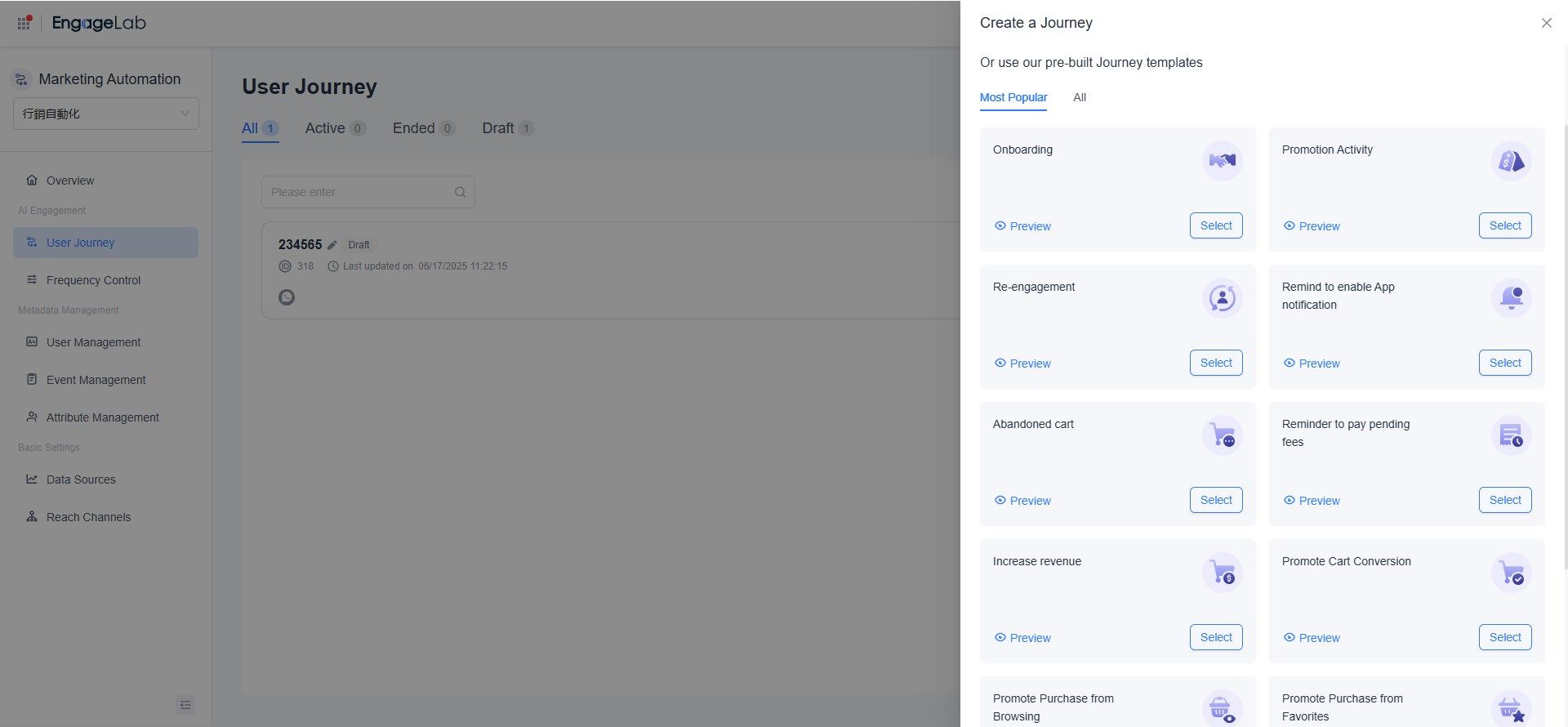
With this combination of multichannel reach, intelligent automation, and AI-powered personalization , EngageLab enables businesses to strengthen customer loyalty, reduce churn, and scale retention strategies efficiently.
Let's see how you can use a pre-built template for customer retention automation.
Start For FreePart 6: How to Build a Customer Retention Process Flow?
Step 1: Log in to your EngageLab account. Click Marketing Automation.

Step 2: On the left, click User Journey. Then click Create a Journey on the right.
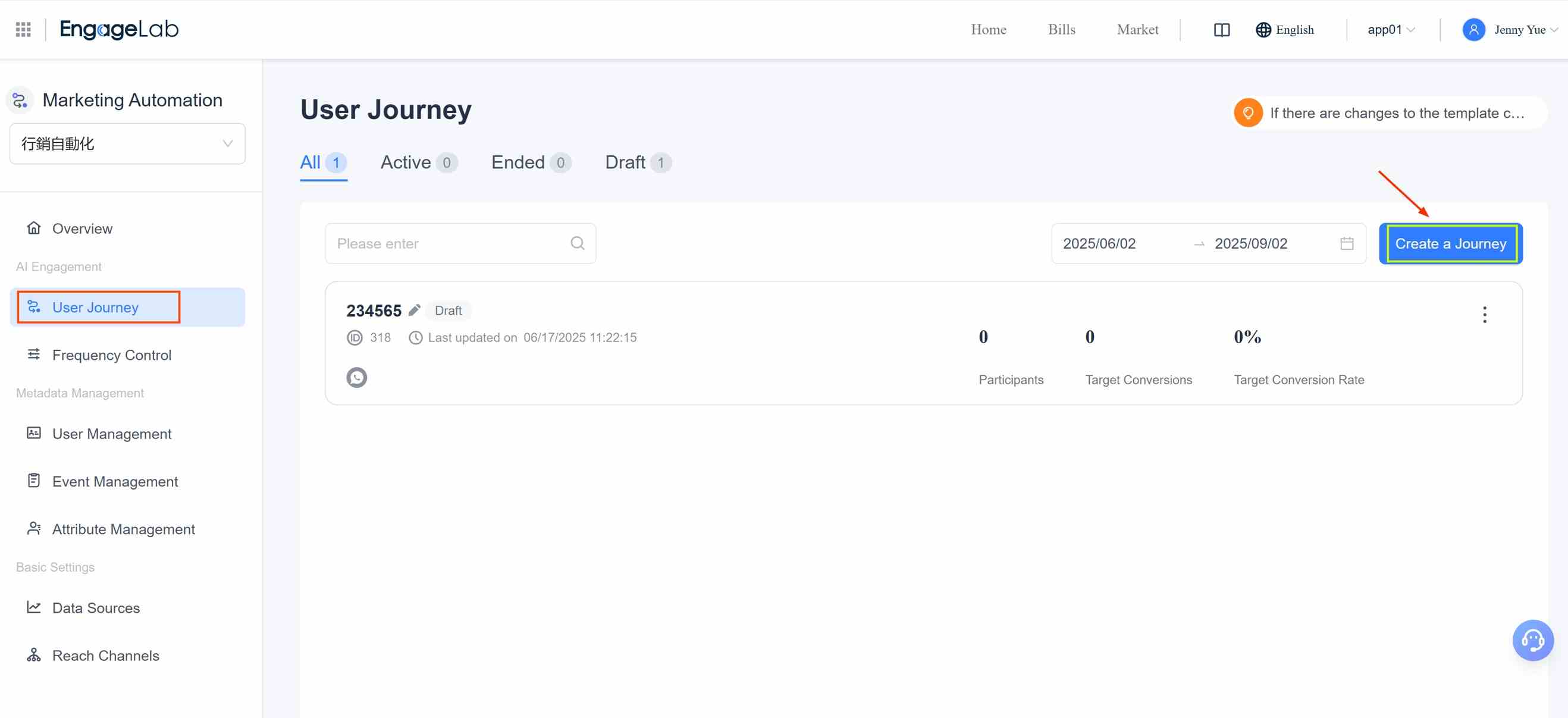
Step 3: You will select pre-built templates. For example, click Re-engagement. Click Select.
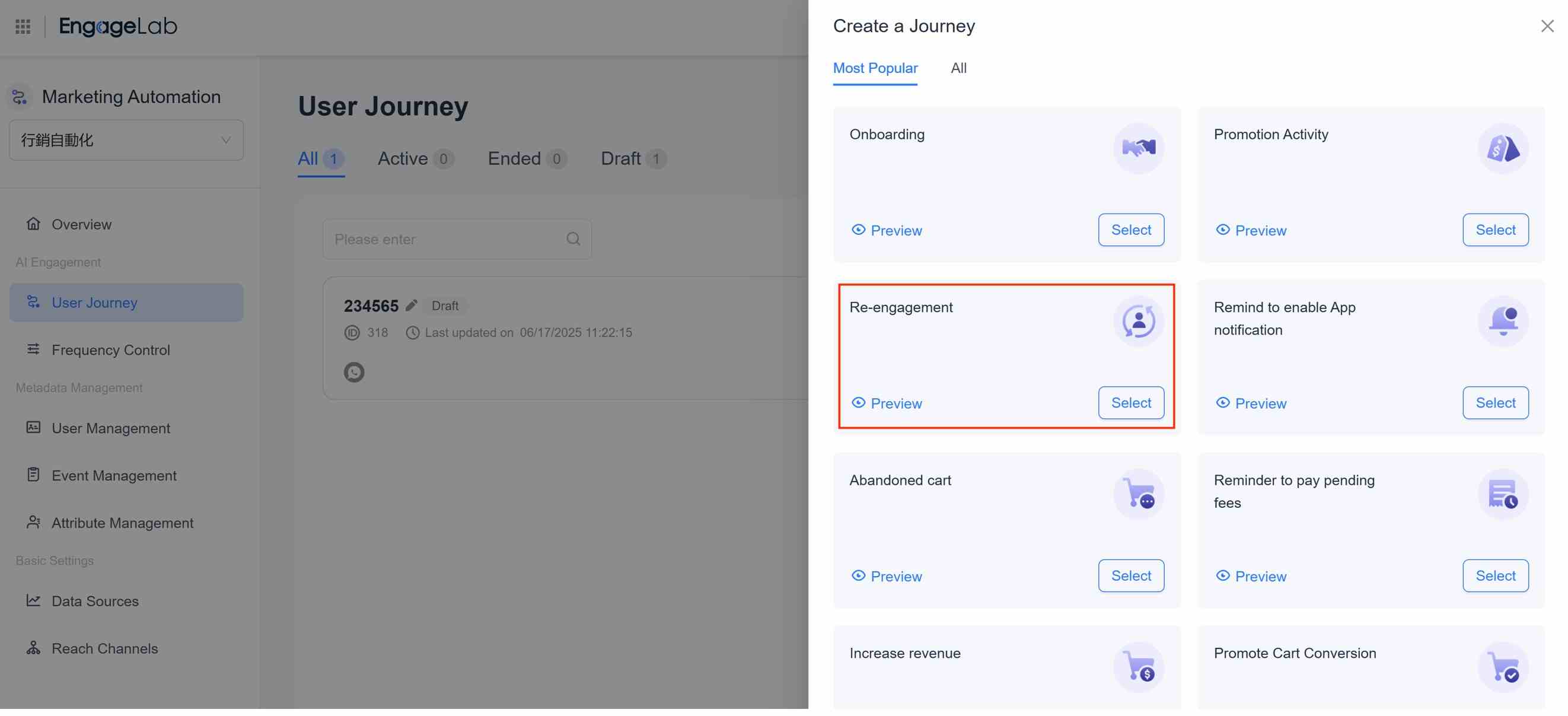
Step 4: It will open the template. On the left, you can adjust all settings. You can write a custom message for notifications and make templates for email, SMS, and WhatsApp.
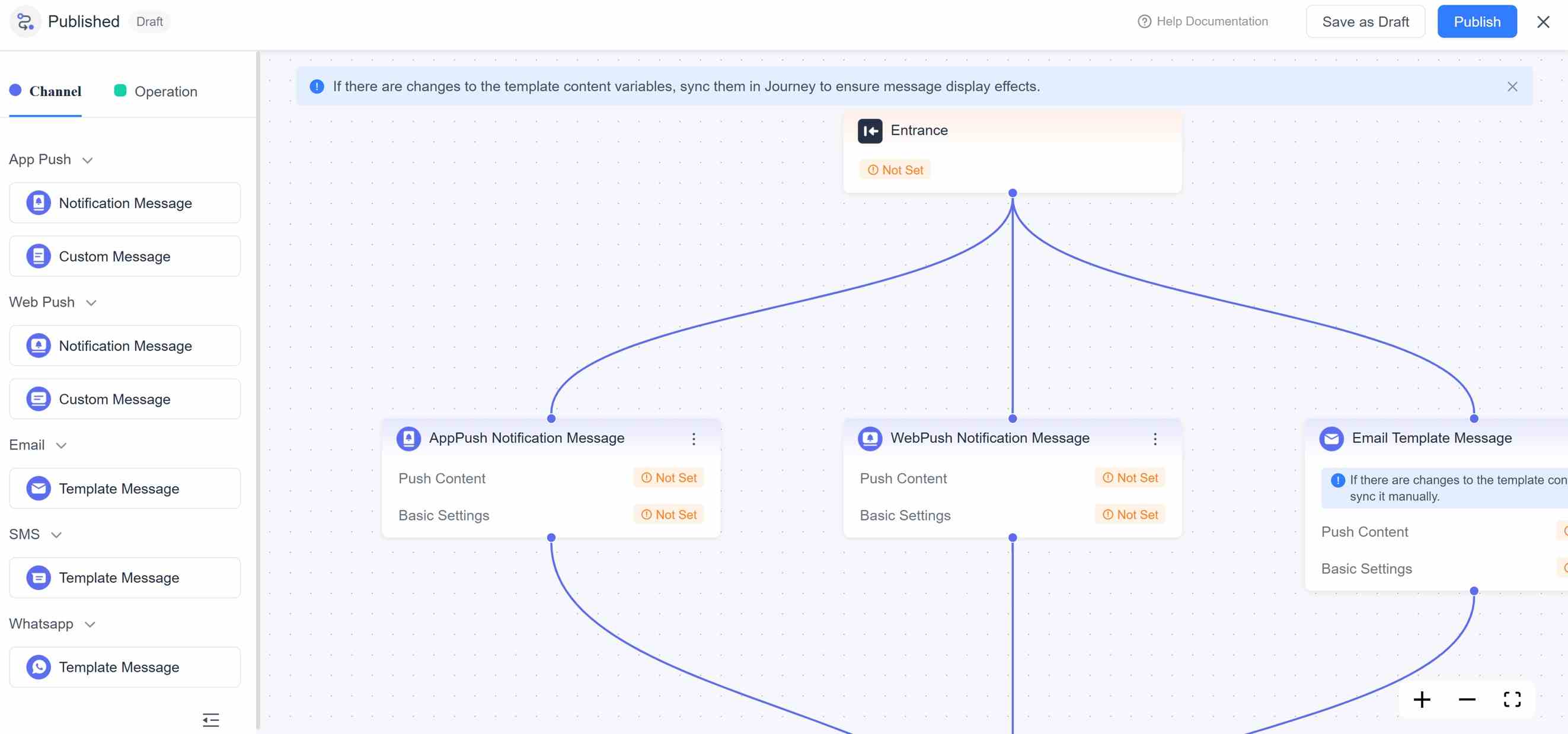
Step 5: You can enter the Journey name and select the audience, conditions, and other settings.
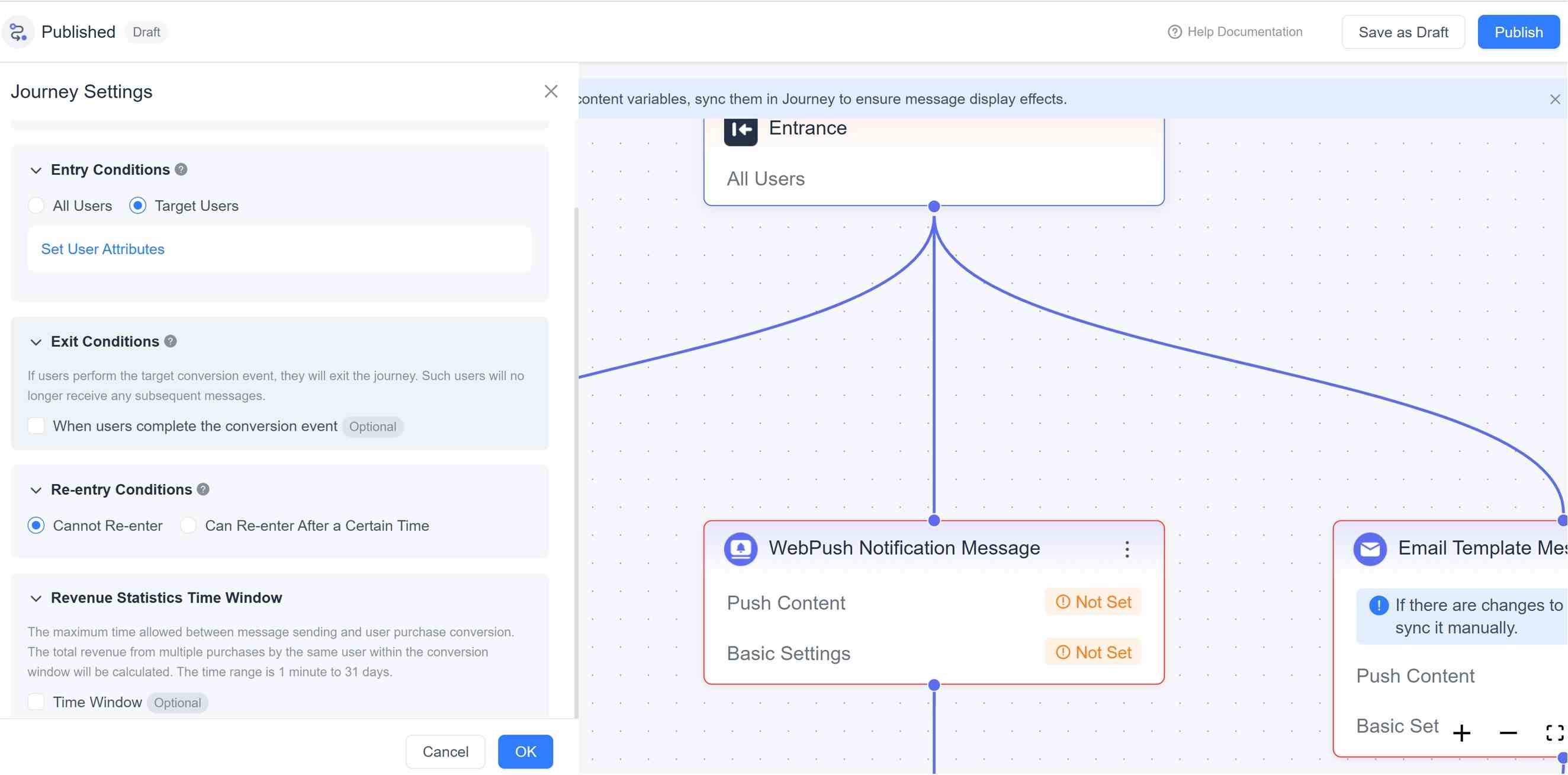
Step 6: Adjust the customer retention workflow according to your business. When you are ready, click Publish. Now, your re-engagement automation is set and ready to engage with the desired customers.
Conclusion
Customer retention automation can ensure a business's sustainable growth. It can reduce churn rate, improve customer experience, and free up the time of employees for more important work. And as everything is automated, it is scalable and cost-effective. EngageLab allows you to make customer retention automation workflows without hassle. It is ideal for enterprises and can help businesses retain customers on a large scale.
Start Building


